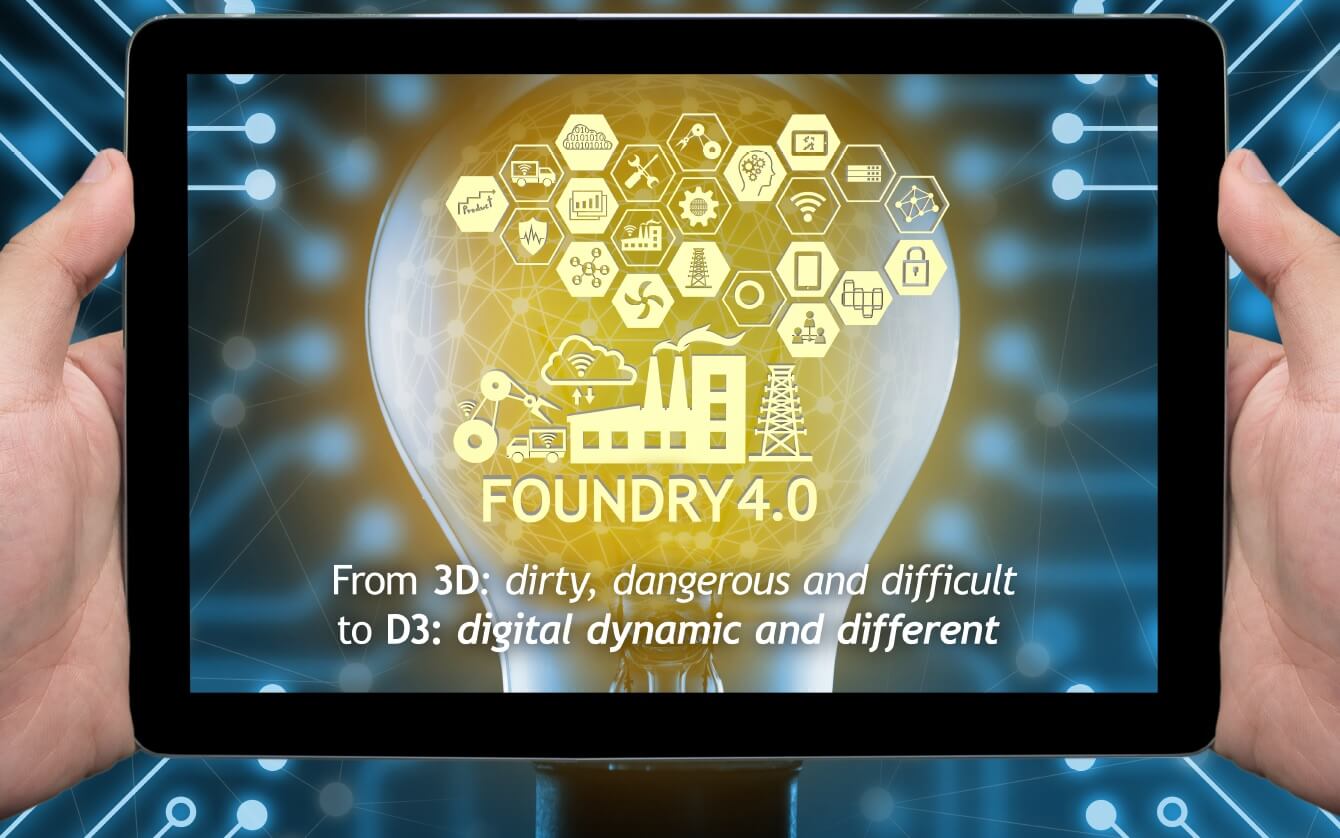Driving the Digital Transformation in Metal Casting Operations
This part highlights the outlook to transform the industry into something technically and IT-wise advanced. Though we cannot change the way “castings are made”, we certainly can change the way “casting processes are monitored & controlled”.
Foundry Managers of the future become IT-gurus as many computer-based technologies must be mastered in parallel, it is not enough just to know about method and casting. For example, they have to know their KPI’s = Key Performance Indicators and these can be manifold. Once KPI’s are defined, e.g. “delivery reliability vs. production capacity and utilization”, then it’s simply about DATA.
This data is through the previously described FRP functionalities and WIP (work in progress) Feedback chains available. From there it’s only a Mouse click or two that are required to visualize this data in adequate format.

Digital transformation in foundries is taking place right now. As mentioned before and we cannot highlight this often enough: Foundry Managers of the future become IT-gurus as many computer-based technologies must be mastered in parallel; it is not enough just to know about methods and casting.
They must be able to access the operational DATA through ONE standard platform in order to receive on time or even real-time information from the shop-floor. To understand FOUNDRY 4.0 systems, we have to make
sure it is understood that ‘it is not equivalent to Industry4.0’.
The foundry is a special place (see Parts 1 to 4 again) and we cannot copy general ideas as we must adapt to foundry-specific solutions. Sometimes
processes and structures to achieve 3.0 (maybe 3.5) must be created before the next step can be followed.
Pa
rt 4 of this Article series explicitly explained this in 5 Easy Steps so that a kind of “FOUNDRY4.0″ environment can be established.

The most important aspect in making the foundries into something technically and IT-wise advanced, and making them into a modern high-tech enterprise that’s fun to work in and attracting young talent, is very much the exposure to standard systems.
Imagine a worker on a core shooting machine has a computer screen next to him. He produces the cores on the core shooting machine, and after every 10 pieces put on a tray, he scans the Barcode and presses “enter”on a keyboard so that the system knows “10 pieces of good cores for client XYZ have been produced”. In return, the operator knows the status of the overall order i.e.
the casting. Through an integrated feedback system with clear display icons on the monitor, he can check the quality of his work contributing to the positive outcome.
The same as described above could be transferred to the molding section, to the fettling section and even machining and others. It is no difficult to provide utmost information throughout the organization in order to make it transparent. In addition, the above sounds like futuristic environment? It is the reality in many foundry operations that have already embraced and initiated the common FRP – Foundry Resource Planning solutions platform, from inquiry to dispatch, in their company. Examples are known and will be described in detail in our last chapter series.
We can and will reiterate that although the process of melting / moulding / pouring / shake out / fettling etc cannot be changed, the Smart and Green FOUNDRY 4.0 movement via Associations is visible. To embark on this journey it is best to engage equipment manufacturers to be involved from the beginning as this provides total process control with digital technologies (e.g. FRP).
The whole “Industry 4.0” movement is driving / pressurizing foundries to be more innovative as know-how transfer through documented work is supported via systems like FRP in order to resolve legacy issues. This provides
again new opportunities for “Man – Machine – Material” integration, and as the machines become DATA transparent so do the workers. This includes new
responsibilites, new job scopes within the foundry, new and innovative human solutions; and will help to ensure the future security for foundries via technical advanced handling of traditional technologies. Software based and computer controlled workplaces ensure the attraction the industry deserves. Continuous investment into this will no longer be the exception, it will become the norm.
We are proud to say that the image of 3D = dirty, dangerous and difficult, will change towards something like D3 = digital, dynamic and different, in a not too distant future.
FRP will take 100% part in this transformation.

